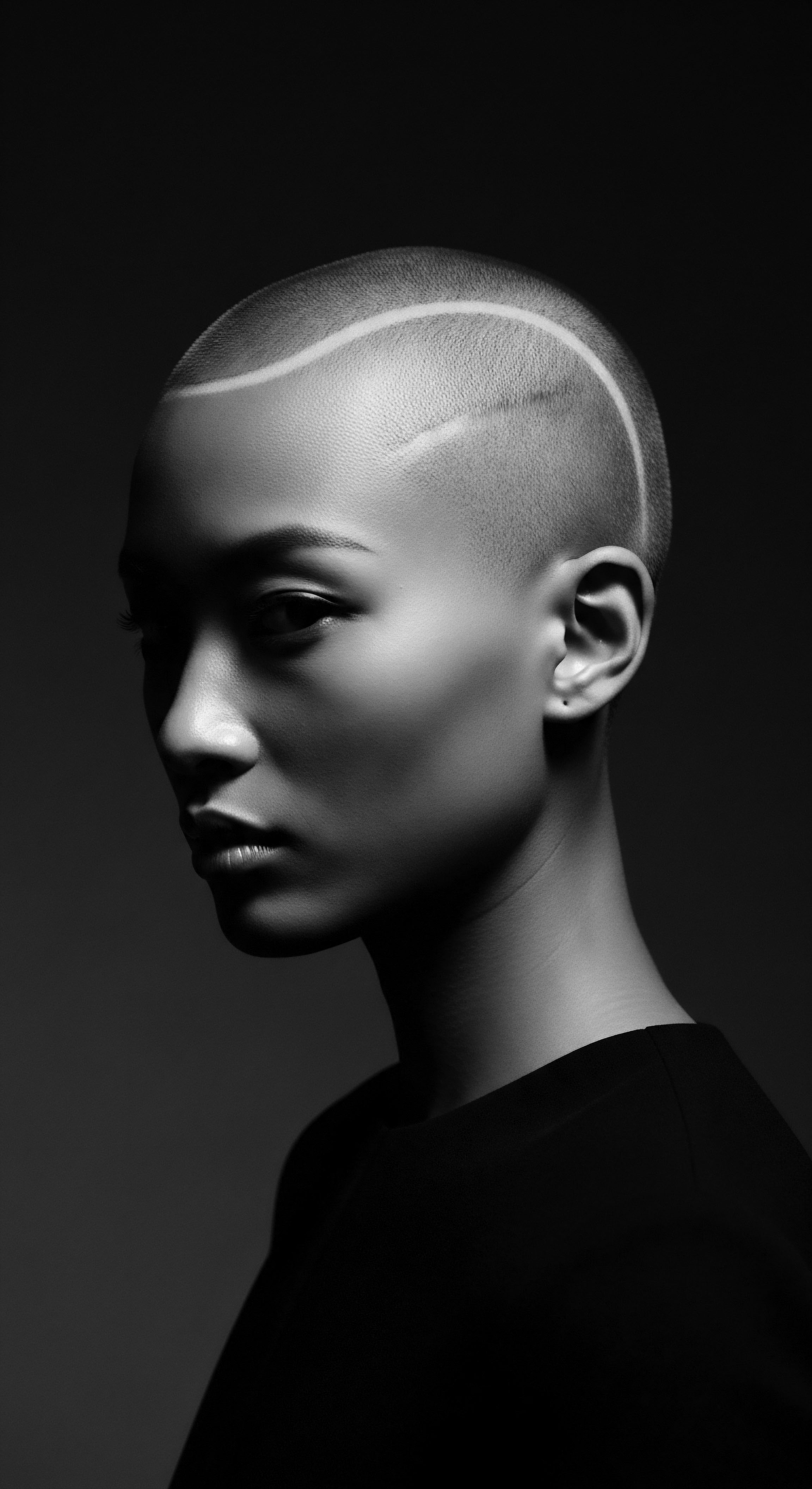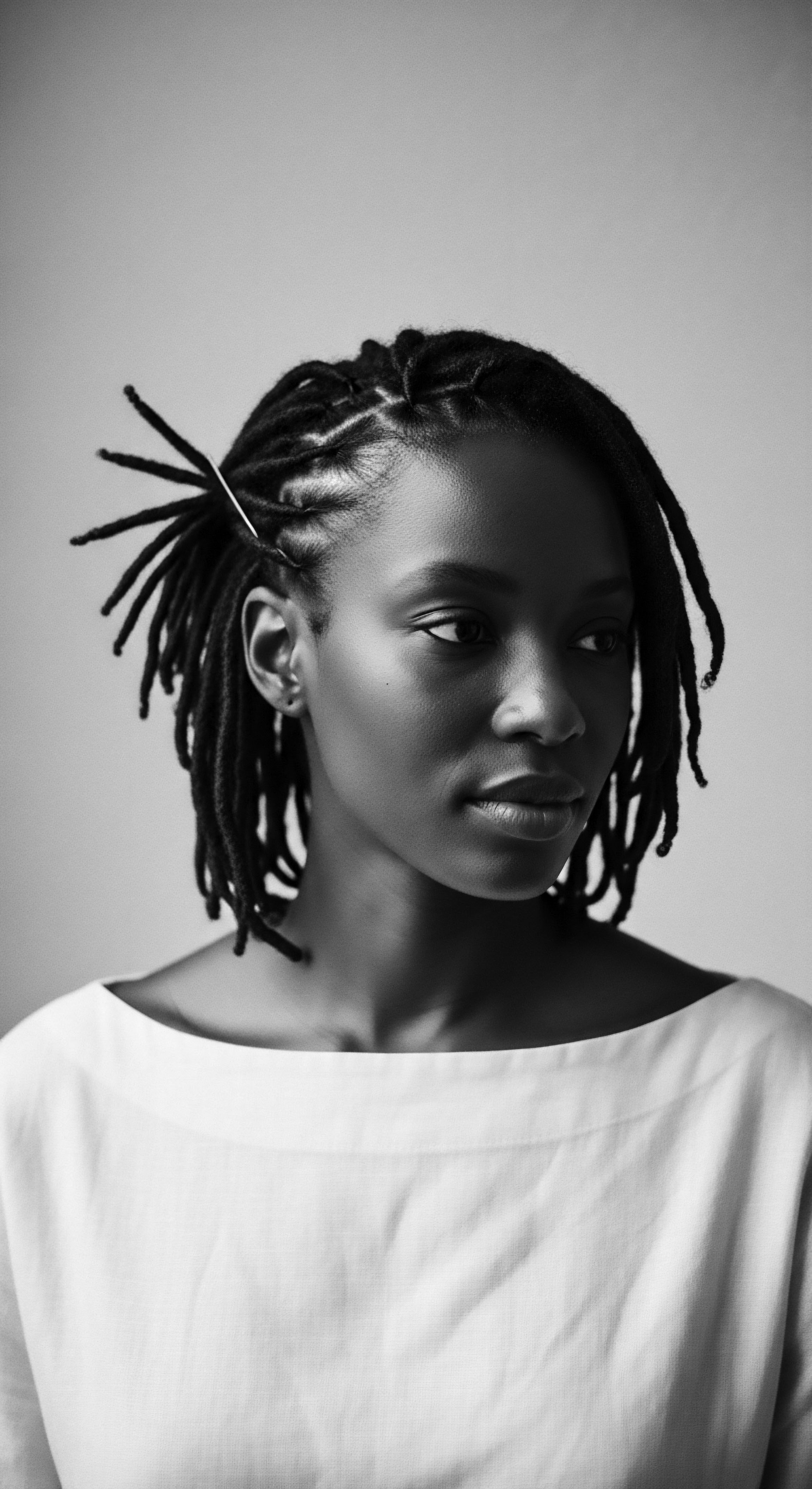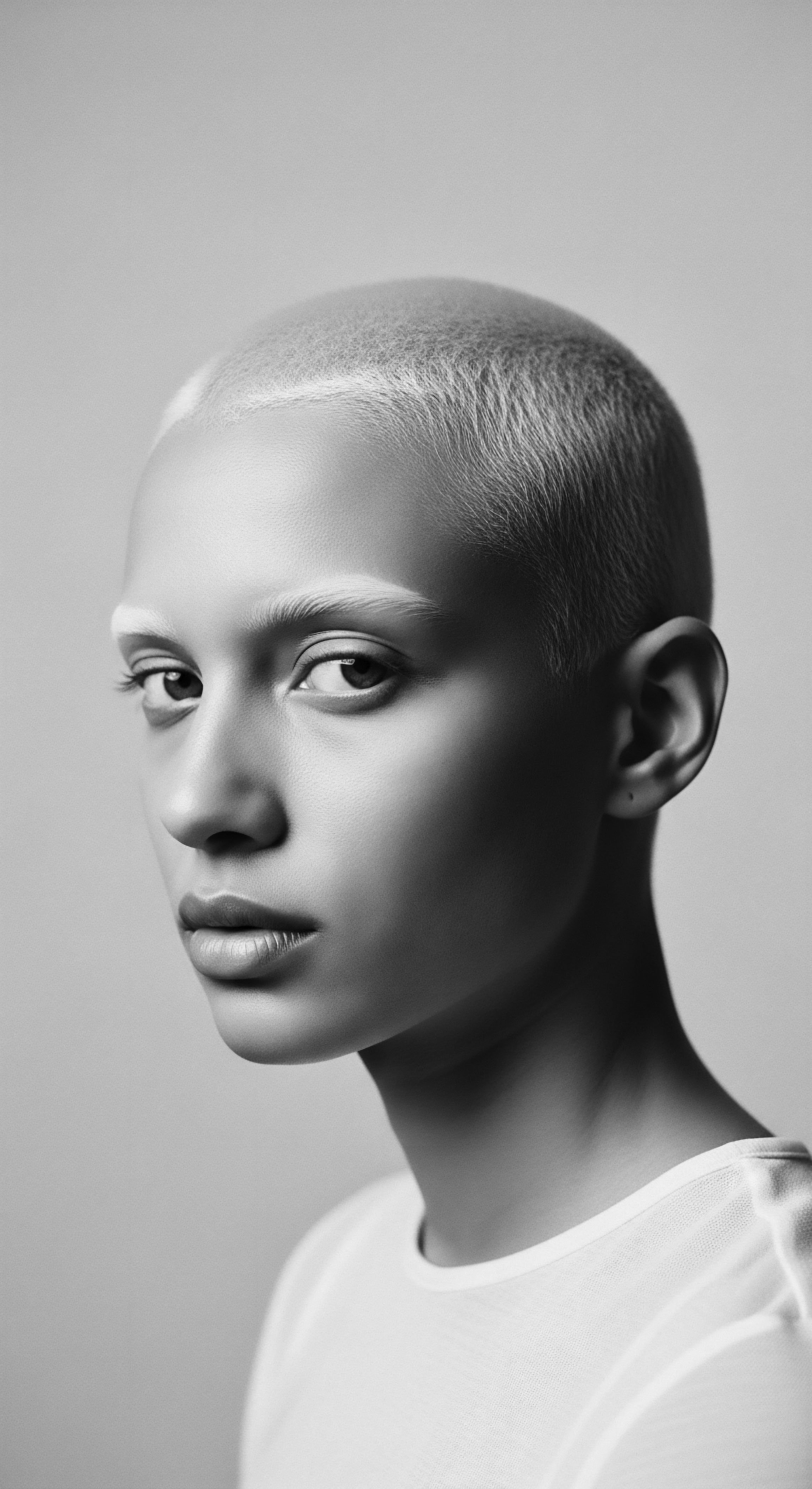
Fundamentals
The concept of Creole Hair Practices, when first encountered, may appear to refer simply to a collection of styling techniques or care routines. Its true meaning, however, extends far beyond mere aesthetics. This delineation of Creole Hair Practices serves as a foundational entry in Roothea’s ‘living library,’ a space where the rich heritage of textured hair is honored and explored. At its most elemental, Creole Hair Practices encompasses the distinct hair care rituals, styling methods, and cultural customs that emerged within Creole communities, primarily in regions shaped by the historical intermingling of African, European, and Indigenous peoples, most notably in the American South and the Caribbean.
This initial interpretation points to the historical genesis of these traditions. The practices were not born in a vacuum; they arose from the unique crucible of Creole identity, a blend of diverse ancestral wisdoms and adaptations to new environments. Understanding Creole Hair Practices begins with recognizing it as a living testament to resilience and ingenuity. It is a historical and cultural statement, reflecting the complex interplay of heritage, survival, and creative expression.

The Genesis of Creole Hair Traditions
The origins of Creole hair traditions are deeply intertwined with the transatlantic passage and the subsequent formation of new societies. Enslaved Africans, forcibly brought to the Americas, carried with them an ancestral knowledge of hair care, rooted in the rich and varied traditions of West Africa. These practices, which often involved intricate braiding, twisting, and the use of natural oils and botanicals, were integral to identity, social status, and spiritual connection in their homelands. Upon arrival in the New World, these traditions encountered and sometimes blended with European and Indigenous hair customs, adapting to new climates, available resources, and the harsh realities of chattel slavery.
The term ‘Creole’ itself, in this context, often refers to people of mixed African and European descent, particularly in places like Louisiana and various Caribbean islands. Their hair, often exhibiting a wide spectrum of textures from wavy to tightly coiled, required specialized care that neither purely African nor purely European methods alone could fully address. This necessity gave rise to innovative approaches, combining elements from various cultural legacies to preserve hair health and maintain dignity amidst oppressive circumstances.
Creole Hair Practices signify more than styling; they represent a deep cultural response to historical forces, a testament to ancestral ingenuity in preserving hair heritage.

Early Care Rituals ❉ Echoes from the Source
The earliest forms of Creole hair care were deeply rooted in practicality and preservation. Hair, for enslaved individuals, was often neglected or deliberately shorn as a means of stripping identity. Despite these challenges, women, particularly, found ways to maintain some semblance of care.
They relied on locally available plants and oils, echoing the ethnobotanical wisdom carried from Africa. These natural elements provided moisture, protection, and a means to keep hair manageable and healthy under duress.
- Palm Oil ❉ Frequently used for its conditioning properties, aiding in scalp health and moisture retention.
- Castor Oil ❉ Applied for its purported ability to strengthen hair and promote growth, a practice with deep West African roots.
- Herbal Infusions ❉ Leaves and barks from native plants were often boiled to create rinses that cleaned, soothed the scalp, and imparted shine.

Intermediate
Moving beyond a simple overview, an intermediate comprehension of Creole Hair Practices necessitates a deeper appreciation for its layered significance, particularly its role in shaping Black and mixed-race identity across generations. These practices evolved from a blend of ancestral memory, forced adaptation, and a persistent desire for self-expression, ultimately forming a unique cultural lexicon around textured hair. The term Creole Hair Practices therefore gains a broader connotation, encompassing not only the physical acts of care but also the social statements and communal bonds they sustained.
The care of textured hair within Creole communities became a profound act of self-preservation and cultural affirmation. As societies stratified along racial lines, hair texture often became a visible marker of one’s place within the hierarchy. For many Creole individuals, navigating these social constructs meant their hair practices became a delicate balance between adhering to imposed standards and upholding an intrinsic sense of self. This dual reality lends a powerful weight to the historical and ongoing relevance of these traditions.

Hair as a Symbol of Identity and Resistance
Throughout history, Black and mixed-race communities have used hair as a canvas for identity and a quiet form of resistance. In colonial settings, where European beauty standards often dictated what was considered acceptable, the diverse textures of Creole hair were frequently disparaged. Yet, despite these pressures, Creole women, in particular, found ways to adorn and style their hair in ways that spoke to their heritage and individuality. This period saw the emergence of styles that, while sometimes constrained by circumstance, retained an undeniable connection to African aesthetic principles.
The significance of hair extended beyond personal adornment; it served as a non-verbal language, communicating status, marital availability, and even tribal affiliation in pre-colonial African societies. When these traditions arrived in the Americas, they transformed, becoming subtle yet potent acts of defiance. The very act of caring for one’s hair, especially when such care was discouraged or criminalized, represented a refusal to be stripped of one’s cultural legacy.
Creole Hair Practices embody an enduring spirit of defiance, transforming imposed restrictions into vibrant declarations of selfhood and ancestral connection.

Community and the Tender Thread of Care
Hair care in Creole communities was often a communal activity, a time for sharing stories, wisdom, and laughter. These gatherings, whether in a family home or a local salon, became vital spaces for cultural transmission. Young girls learned from their mothers and grandmothers not only how to braid or apply oils but also the deeper meaning behind these actions—the connection to lineage, the importance of self-respect, and the quiet strength derived from maintaining one’s heritage. This shared experience formed a tender thread, binding generations through the ritual of hair care.
The tools and ingredients used also held a special place. Beyond simple utility, the combs, brushes, and natural preparations became extensions of this communal care. Recipes for hair oils and conditioners, passed down orally, often contained indigenous herbs and locally sourced components, reflecting an intimate knowledge of the surrounding environment and a creative adaptation of traditional African remedies.
| Ingredient Coconut Oil |
| Traditional Use in Creole Hair Care Moisturizing dry strands, providing a natural sheen, and aiding in detangling. |
| Ingredient Aloe Vera |
| Traditional Use in Creole Hair Care Soothing scalp irritation, promoting hair growth, and adding softness. |
| Ingredient Bay Rum |
| Traditional Use in Creole Hair Care Used as a scalp tonic, believed to stimulate growth and offer a pleasant aroma. |
| Ingredient Rosemary |
| Traditional Use in Creole Hair Care Infused in rinses for scalp health, stimulating circulation, and enhancing hair vibrancy. |
| Ingredient These elements represent a blend of African, Indigenous, and European influences, adapted for the unique needs of textured hair in Creole environments. |

Academic
The academic definition of Creole Hair Practices transcends anecdotal observations, positioning it as a complex socio-cultural phenomenon, a profound expression of ethnobotanical wisdom, and a critical lens through which to examine the dynamics of power, identity, and resistance within the African diaspora. It is not merely a collection of hair routines; rather, it is a historical archive inscribed upon the very strands of textured hair, a testament to enduring ancestral knowledge and adaptive ingenuity. This understanding necessitates an examination of the intricate interplay between biological hair characteristics, environmental factors, colonial impositions, and the unyielding human spirit to define oneself. The meaning of Creole Hair Practices, from an academic standpoint, thus represents a rich domain of inquiry, illuminating the resilience of cultural practices in the face of systemic adversity.
Scholarly inquiry into Creole Hair Practices often draws from anthropology, historical studies, and ethnobotany, seeking to delineate the specific mechanisms through which these traditions persisted and evolved. The physical characteristics of textured hair, with its unique helical structure and susceptibility to dryness, demanded specific care methods that were often absent from Eurocentric beauty paradigms. Consequently, Creole communities developed sophisticated systems of care, often relying on deep knowledge of local flora and inherited African botanical remedies.
This specialized knowledge, transmitted across generations, represents a form of embodied resistance against cultural erasure. The continuous application of these practices, even when subtly performed, served as a potent affirmation of a distinct identity, one that refused to be subsumed by dominant cultural narratives.

The Tignon Laws ❉ A Case Study in Hair as Resistance
To truly comprehend the profound significance of Creole Hair Practices within the broader narrative of textured hair heritage, one must consider specific historical junctures where hair became a direct site of contention and defiance. A compelling instance is the enactment of the Tignon Laws in Spanish colonial Louisiana. In 1786, Governor Esteban Miró issued a proclamation, often referred to as the Tignon Laws, mandating that free women of color (gens de couleur libres) cover their hair with a headwrap, or “tignon,” when in public. This edict was a deliberate attempt to enforce social distinctions and diminish the perceived allure and social mobility of these women, whose elaborate hairstyles, often adorned with jewels and feathers, were seen as challenging the established racial and social order.
(Gould, 1997, p. 118). The law aimed to visibly mark these women as belonging to the “slave class,” regardless of their free status, thereby reinforcing racial hierarchy and controlling their public presentation.
The response of Creole women to these oppressive regulations was nothing short of remarkable. Instead of submitting to the intended humiliation, they transformed the tignon into a powerful symbol of their ingenuity, wealth, and undeniable beauty. They selected the most vibrant fabrics, such as madras, and devised intricate, sculptural tying methods, decorating their headwraps with jewels, ribbons, and other embellishments. This creative reinterpretation rendered the tignon a fashion statement that often drew even more attention than their uncovered hair had previously.
Historian Carolyn Long observed that the tignon, rather than serving as a badge of dishonor, became a mark of distinction. This historical example vividly illustrates how Creole Hair Practices, even when seemingly restricted, became a powerful vehicle for expressing autonomy and cultural pride, demonstrating an unwavering commitment to self-definition against the backdrop of systemic oppression.
The Tignon Laws, designed to suppress, instead catalyzed a vibrant demonstration of Creole women’s aesthetic and cultural defiance, proving hair’s enduring power as a symbol of self.

Ethnobotanical Wisdom and Hair Science
The practical elements of Creole Hair Practices are deeply rooted in a sophisticated ethnobotanical understanding, reflecting generations of empirical knowledge about natural ingredients. This aspect connects directly to the “Echoes from the Source,” validating ancestral wisdom through contemporary scientific understanding. The traditional reliance on plant-based remedies and natural oils was not arbitrary; it stemmed from an intimate relationship with the environment and a discerning awareness of what nourished and protected textured hair.
For instance, the consistent use of certain plant extracts in hair rinses and scalp treatments can be correlated with modern dermatological insights. Many botanicals traditionally employed possess anti-inflammatory, antimicrobial, or moisturizing properties beneficial for scalp health and hair strength. The practice of frequent oiling, using substances like coconut oil or castor oil, addressed the inherent dryness of highly coiled hair textures, providing a protective barrier against environmental stressors and reducing friction that could lead to breakage. This application of science to heritage practices reveals a continuous thread of understanding, where traditional knowledge often anticipated contemporary findings.
- Chebe Powder ❉ While more directly associated with Chadian practices, the principle of using finely ground herbs to coat and protect hair strands against breakage found resonance in various diasporic communities, including some Creole adaptations, focusing on length retention and minimizing dryness.
- Black Castor Oil ❉ A staple in many Afro-Caribbean and Creole traditions, this oil, derived from roasted castor beans, is highly viscous and lauded for its purported ability to stimulate circulation to the scalp, promoting growth and strengthening hair shafts.
- Rosemary and Peppermint Infusions ❉ These herbs, often steeped in water or oils, were applied to the scalp for their invigorating properties, which modern science attributes to their ability to increase blood flow to hair follicles, supporting healthier growth cycles.
- Shea Butter ❉ Utilized for its emollient properties, shea butter offered deep conditioning and protection against moisture loss, particularly crucial for textured hair that tends to be more porous.
The scientific elucidation of these traditional remedies underscores the profound value of ancestral practices. What was once passed down through observation and experience now finds validation in the laboratory, affirming the deep understanding of hair biology held within these communities. This synthesis of historical application and modern analysis elevates the appreciation for Creole Hair Practices, recognizing them as a sophisticated system of care.

The Unbound Helix ❉ Hair as a Continual Cultural Narrative
The academic examination of Creole Hair Practices also extends to its enduring influence on contemporary textured hair movements. The legacy of resistance, adaptation, and self-definition, forged in the crucible of colonial society, continues to shape how Black and mixed-race individuals relate to their hair today. The “natural hair movement,” for example, which gained significant momentum in the 2000s, echoes the sentiments of the Tignon Laws era, where wearing one’s hair in its natural state became a political and personal declaration. This movement, like the Creole women’s defiant tignons, challenges Eurocentric beauty standards and reclaims ancestral aesthetics.
The challenges faced by Creole women centuries ago — the policing of their appearance, the pressure to conform, and the struggle for self-acceptance — find contemporary parallels in ongoing debates about hair discrimination in schools and workplaces. The CROWN Act (Creating a Respectful and Open World for Natural Hair), enacted in various states, is a modern legislative effort to protect individuals from discrimination based on hair texture and protective styles. This continuity highlights that the significance of Creole Hair Practices is not confined to history; it is a living, breathing cultural narrative that adapts and persists, continually shaping identity and asserting the right to self-expression. The resilience embedded in these practices serves as a guiding principle for the ongoing journey of textured hair identity.
| Historical Context (18th-19th Century) Tignon Laws (1786) ❉ Mandated head coverings for free women of color to denote inferior status. |
| Modern Context (20th-21st Century) Natural Hair Movement (2000s-Present) ❉ Reclaiming natural textures as a symbol of pride and resistance against Eurocentric beauty standards. |
| Historical Context (18th-19th Century) Hair as a Social Marker ❉ Texture and style often determined social standing and acceptance within colonial hierarchies. |
| Modern Context (20th-21st Century) Hair Discrimination ❉ Ongoing challenges in workplaces and schools where natural Black hairstyles may face bias or restriction. |
| Historical Context (18th-19th Century) Ancestral Care Practices ❉ Reliance on traditional oils and herbs for hair health, adapted from African and Indigenous knowledge. |
| Modern Context (20th-21st Century) Ethnobotanical Revival ❉ Renewed interest in natural ingredients and traditional methods, often supported by scientific understanding of their benefits. |
| Historical Context (18th-19th Century) The journey of textured hair, from historical oppression to contemporary self-acceptance, mirrors the enduring spirit of Creole communities. |

Reflection on the Heritage of Creole Hair Practices
As we draw this meditation on Creole Hair Practices to a close, a deeper understanding emerges, one that transcends mere definition. It is a profound acknowledgment of the enduring spirit that resides within each curl, coil, and wave of textured hair. The story of Creole Hair Practices is a living chronicle, a resonant echo of ancestral wisdom, and a vibrant declaration of identity. It speaks to the remarkable capacity of humanity to transform adversity into beauty, constraint into creative freedom.
From the elemental biology that shapes each strand, through the tender, communal acts of care passed down through generations, to the unbound expression of self that hair permits, Creole Hair Practices serve as a constant reminder of our collective heritage. It is a heritage not of victimhood, but of profound resilience, of a cultural legacy that adapted, innovated, and thrived against overwhelming odds. The historical examples, like the defiant transformation of the tignon, illustrate that hair has always been more than just adornment; it is a political statement, a cultural anchor, and a deeply personal connection to one’s roots.
Roothea’s ‘living library’ aims to preserve and celebrate these narratives, ensuring that the wisdom embedded in Creole Hair Practices continues to guide and inspire. It reminds us that every act of caring for textured hair, whether a simple oiling or an elaborate styling, is a participation in a sacred, unbroken lineage. It is a moment of communion with those who came before, a celebration of the beauty that persists, and a hopeful gesture towards the future of self-defined beauty. The understanding of Creole Hair Practices is a call to honor the deep, rich story held within each strand, recognizing it as a powerful, ever-evolving symbol of identity and belonging.

References
- Byrd, A. & Tharps, L. (2001). Hair Story ❉ Untangling the Roots of Black Hair in America. St. Martin’s Press.
- Gould, V. M. (1997). The Devil’s Lane ❉ Sex and Race in the Early South. Oxford University Press.
- Jacobs-Huey, L. (2007). From the Kitchen to the Parlor ❉ Language and Becoming in African American Women’s Hair Care. Oxford University Press.
- Long, C. (2001). A New Orleans Voudou Priestess ❉ The Legend and Reality of Marie Laveau. University Press of Florida.
- Mercer, K. (1994). Welcome to the Jungle ❉ New Positions in Cultural Studies. Routledge.
- Rooks, N. M. (1996). Hair Raising ❉ Beauty, Culture, and African American Women. Rutgers University Press.
- Tharps, L. & Byrd, A. (2014). Hair Story ❉ Untangling the Roots of Black Hair in America (Revised and Updated Edition). St. Martin’s Press.
- White, S. (2001). Styling the Self ❉ The Tignon and Identity in New Orleans. Journal of American History.
